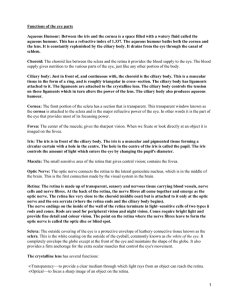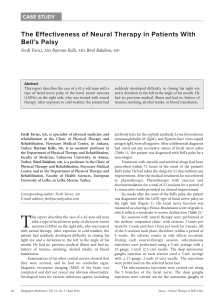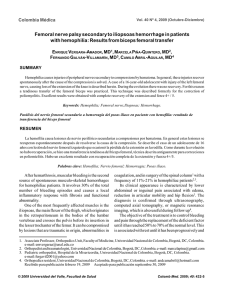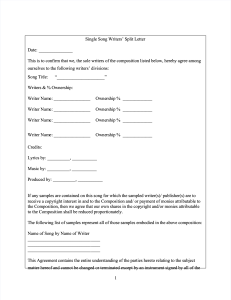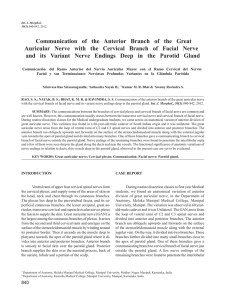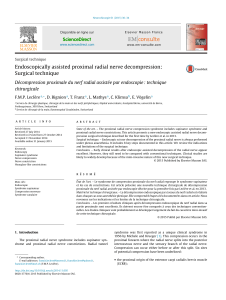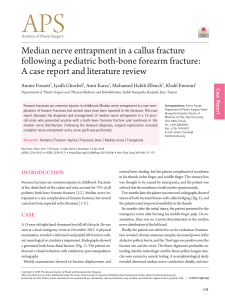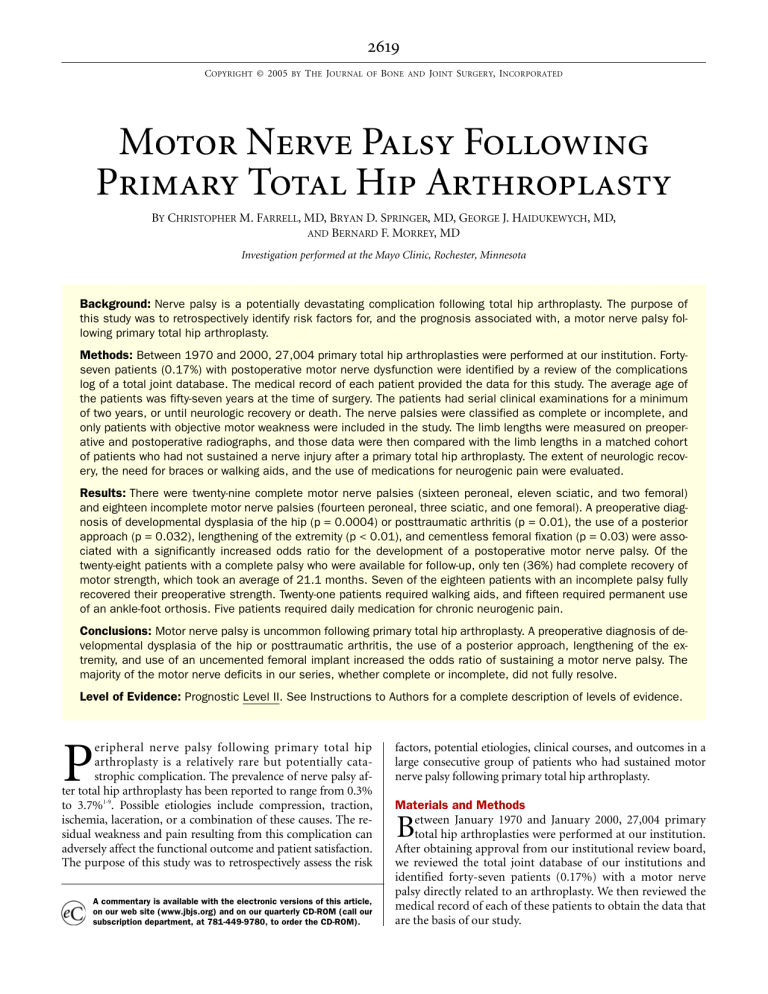
2619 COPYRIGHT © 2005 BY THE JOURNAL OF BONE AND JOINT SURGERY, INCORPORATED Motor Nerve Palsy Following Primary Total Hip Arthroplasty BY CHRISTOPHER M. FARRELL, MD, BRYAN D. SPRINGER, MD, GEORGE J. HAIDUKEWYCH, MD, AND BERNARD F. MORREY, MD Investigation performed at the Mayo Clinic, Rochester, Minnesota Background: Nerve palsy is a potentially devastating complication following total hip arthroplasty. The purpose of this study was to retrospectively identify risk factors for, and the prognosis associated with, a motor nerve palsy following primary total hip arthroplasty. Methods: Between 1970 and 2000, 27,004 primary total hip arthroplasties were performed at our institution. Fortyseven patients (0.17%) with postoperative motor nerve dysfunction were identified by a review of the complications log of a total joint database. The medical record of each patient provided the data for this study. The average age of the patients was fifty-seven years at the time of surgery. The patients had serial clinical examinations for a minimum of two years, or until neurologic recovery or death. The nerve palsies were classified as complete or incomplete, and only patients with objective motor weakness were included in the study. The limb lengths were measured on preoperative and postoperative radiographs, and those data were then compared with the limb lengths in a matched cohort of patients who had not sustained a nerve injury after a primary total hip arthroplasty. The extent of neurologic recovery, the need for braces or walking aids, and the use of medications for neurogenic pain were evaluated. Results: There were twenty-nine complete motor nerve palsies (sixteen peroneal, eleven sciatic, and two femoral) and eighteen incomplete motor nerve palsies (fourteen peroneal, three sciatic, and one femoral). A preoperative diagnosis of developmental dysplasia of the hip (p = 0.0004) or posttraumatic arthritis (p = 0.01), the use of a posterior approach (p = 0.032), lengthening of the extremity (p < 0.01), and cementless femoral fixation (p = 0.03) were associated with a significantly increased odds ratio for the development of a postoperative motor nerve palsy. Of the twenty-eight patients with a complete palsy who were available for follow-up, only ten (36%) had complete recovery of motor strength, which took an average of 21.1 months. Seven of the eighteen patients with an incomplete palsy fully recovered their preoperative strength. Twenty-one patients required walking aids, and fifteen required permanent use of an ankle-foot orthosis. Five patients required daily medication for chronic neurogenic pain. Conclusions: Motor nerve palsy is uncommon following primary total hip arthroplasty. A preoperative diagnosis of developmental dysplasia of the hip or posttraumatic arthritis, the use of a posterior approach, lengthening of the extremity, and use of an uncemented femoral implant increased the odds ratio of sustaining a motor nerve palsy. The majority of the motor nerve deficits in our series, whether complete or incomplete, did not fully resolve. Level of Evidence: Prognostic Level II. See Instructions to Authors for a complete description of levels of evidence. P eripheral nerve palsy following primary total hip arthroplasty is a relatively rare but potentially catastrophic complication. The prevalence of nerve palsy after total hip arthroplasty has been reported to range from 0.3% to 3.7%1-9. Possible etiologies include compression, traction, ischemia, laceration, or a combination of these causes. The residual weakness and pain resulting from this complication can adversely affect the functional outcome and patient satisfaction. The purpose of this study was to retrospectively assess the risk A commentary is available with the electronic versions of this article, on our web site (www.jbjs.org) and on our quarterly CD-ROM (call our subscription department, at 781-449-9780, to order the CD-ROM). factors, potential etiologies, clinical courses, and outcomes in a large consecutive group of patients who had sustained motor nerve palsy following primary total hip arthroplasty. Materials and Methods etween January 1970 and January 2000, 27,004 primary total hip arthroplasties were performed at our institution. After obtaining approval from our institutional review board, we reviewed the total joint database of our institutions and identified forty-seven patients (0.17%) with a motor nerve palsy directly related to an arthroplasty. We then reviewed the medical record of each of these patients to obtain the data that are the basis of our study. B 2620 THE JOUR NAL OF BONE & JOINT SURGER Y · JBJS.ORG VO L U M E 87-A · N U M B E R 12 · D E C E M B E R 2005 One patient with a complete sciatic palsy was lost to follow-up, leaving forty-six patients for review. The patients were stratified according to whether they had a complete or partial lesion, and they were followed until neurologic recovery (a return to preoperative motor strength) or death or for a minimum of two years. A complete neurologic injury was defined as grade-0 muscle strength and no motor function whatsoever; a patient with an incomplete injury demonstrated some motor function, with grade-1 muscle strength or better, on physical examination10. Only patients with clinically objective motor weakness (loss of at least one full motor grade on manual muscle-testing) were included in the study. The final follow-up was performed at a mean of six years (range, two months to twenty-one years). At the time of follow-up, functional status was assessed by evaluating the extent of neurologic recovery, the need for braces or walking aids, and the use of medications for neurogenic pain. There were eighteen men and twenty-nine women, with a mean age of fifty-seven years (range, twenty to eightynine years) at the time of surgery. Twenty-seven nerve injuries involved the right side, and twenty involved the left. The preoperative diagnoses included osteoarthritis (twenty-two patients), developmental hip dysplasia (nine), posttraumatic arthritis (five), rheumatoid arthritis (four), osteonecrosis (three), postinfectious arthritis (one), hemophilic arthropathy (one), and sequelae of a slipped capital epiphysis (one). The acetabular and femoral components were cemented in twenty-five patients, the arthroplasty was done without cement in thirteen patients, and a so-called hybrid arthroplasty consisting of a cemented femoral component and an uncemented acetabular component was performed in nine patients. The surgical approach was anterolateral in twenty-two patients, posterior in sixteen, and transtrochanteric in nine. Nine (19%) of the forty-seven patients had had surgery on the hip prior to the total hip replacement. Preoperative motor and sensory examination revealed a one-grade motor deficit (grade 4 of 5 on manual muscle-testing) in the peroneal distribution prior to the total hip arthroplasty in two patients. The remaining patients had completely normal neurologic findings (grade 5 of 5) preoperatively. General anesthesia was used in thirty-two patients; spinal anesthesia, in nine; and epidural anesthesia, in six. The average operative time was 229 minutes (range, 105 to 330 minutes). The average estimated blood loss was 990 mL (range, 50 to 3800 mL). As part of the chart review, we recorded the time to recognition of the nerve injury, the severity of the injury (complete or incomplete), the clinical presentation of the injury, the anatomic distribution (e.g., sciatic or peroneal), and the possible etiology. Forty-three of the forty-seven patients had adequate preoperative and postoperative radiographs available for review. Any postoperative change in limb length was determined for each of these patients by measuring the distance from the lesser trochanter to a reference line drawn tangential to the ischial tuberosities. These forty-three patients were then M O T O R N E R VE P A L S Y F O L L OW I N G P R I M A R Y TO T A L H I P A R T H RO P L A S T Y paired with forty-three patients matched by age, sex, gender, diagnosis, and year of surgery who had undergone primary total hip arthroplasty but had not sustained a motor nerve deficit. Statistical analysis was performed with use of a conditional logistics regression analysis. P values of <0.05 were considered significant. Univariate and multivariate logistic regression analyses, with determination of 95% confidence intervals, were performed to assess gender, age, year of surgery, diagnosis, approach, and body-mass index as potential risk factors11. These factors were compared with those in a control group of 26,957 primary total hip arthroplasties performed during the same time-period. Again, p values of <0.05 were considered significant. Results f the forty-seven motor nerve palsies, thirty (64%) were peroneal, fourteen (30%) were sciatic, and three (6%) were femoral. Twenty-six of the forty-seven palsies were diagnosed within twenty-four hours after the arthroplasty, and the remaining twenty-one were diagnosed between two and seventy-four days postoperatively. The chart review revealed that the initial postoperative motor examination had revealed normal findings in eleven of the seventeen patients in whom the palsy was diagnosed more than twenty-four hours postoperatively. Of the remaining six patients, two had been intubated and sedated or confused so that an accurate motor examination could not be performed within the first twentyfour hours. A third patient had had spinal anesthesia, and the motor deficit was initially thought to be related to the prolonged effects of that regional anesthesia. Three patients had poor documentation of the results of the motor examination postoperatively so we could not determine whether there was a delay in the onset or diagnosis, or both. Twenty-nine (62%) of the postoperative nerve palsies were complete (no identifiable motor function [Grade 0 of 5]). Sixteen (55%) involved the peroneal nerve, eleven (38%) involved both divisions of the sciatic nerve, and two (7%) involved the femoral nerve. One patient with a complete sciatic nerve palsy was lost to follow-up after fourteen months, leaving twenty-eight patients with a complete nerve palsy for further analysis. Ten (36%) of these twenty-eight patients had full recovery, eleven (39%) had partial recovery (improvement by at least one motor grade), and seven (25%) had no recovery. The average time until complete recovery in the ten patients was 21.1 months. The average time until maximal recovery in the remaining patients was 14.3 months (range, four days to five years). Of the eighteen incomplete nerve palsies (38%), fourteen involved the peroneal nerve, three involved the sciatic nerve, and one involved the femoral nerve. Seven of the eighteen patients with an incomplete motor deficit had full recovery, three had partial recovery, and eight had no recovery. The average time to maximal (full or partial) recovery following the motor injury was two years (range, three months to 6.5 years). Forty-one (87%) of the forty-seven patients also had O 2621 THE JOUR NAL OF BONE & JOINT SURGER Y · JBJS.ORG VO L U M E 87-A · N U M B E R 12 · D E C E M B E R 2005 M O T O R N E R VE P A L S Y F O L L OW I N G P R I M A R Y TO T A L H I P A R T H RO P L A S T Y TABLE I Results of Univariate Logistic Regression Analysis Risk Factor Odds Ratio 95% Confidence Interval P Value Gender Male Reference Female 1.39 0.77 to 2.50 0.27 >80 yr 66 to 80 yr Reference 1.24 0.36 to 4.27 0.73 51 to 65 yr ≤50 yr 1.39 3.27 0.40 to 4.87 0.94 to 11.4 0.61 0.06 Reference 1.42 0.59 to 3.42 0.43 3.20 1.55 to 6.62 0.002 Age Year of surgery Prior to 1980 1980 to 1989 1990 to time of review Diagnosis Osteoarthritis Posttraumatic arthritis Reference 3.42 1.30 to 9.00 0.01 Develop. hip dysplasia 4.06 1.88 to 8.80 0.0004 Other diagnoses 0.81 0.38 to 1.69 0.57 Reference 2.03 1.07 to 3.87 0.032 0.62 0.28 to 1.34 0.22 Reference 0.94 0.40 to 2.21 0.88 0.74 0.28 to 1.94 0.54 Approach Anterior Posterior Transtrochanteric Body-mass index* <25 25 to <30 ≥30 *Measured only in the subset of patients whose date of surgery was 1988 or later. evidence of sensory deficits on postoperative examination. At the time of final follow-up, fourteen (34%) of those patients had complete recovery of sensation to the preoperative level, ten patients (24%) had partial recovery, and seventeen patients (41%) had no evidence of sensory recovery. The presumptive etiology of the nerve injury, which was determined for twenty-six patients, was a hematoma in eight patients, limb-lengthening in eight, traction or retractor placement in seven, partial laceration of the nerve in two, and a compressive dressing in one. Twenty-one patients (45%) had no documentation of the presumptive etiology of the nerve injury. The average increase in the limb length was 1.7 cm (range, −0.1 to 4.4 cm). The eight patients in whom excessive lengthening was considered to be the cause of the nerve palsy had a mean of 1.7 cm (range, 1.3 to 2.5 cm) of lengthening. Seven patients (15%) underwent a reoperation to treat the motor nerve palsy following the index operation. Four of these reoperations were performed to decompress a hematoma that was presumed to be causing the nerve palsy. No hematoma was found in one of these patients, who did not recover neurologic function. In the three other patients, a postoperative hematoma was found and evacuated. In one of the three patients, a complete sciatic nerve palsy with severe swell- ing in the hip and thigh developed ten days postoperatively, and she was presumed to have a hematoma. Within twentyfour hours after that diagnosis, the hip was explored and a hematoma was found and decompressed. This patient recovered full motor function nine days later. In the second patient, an incomplete peroneal nerve palsy developed within twentyfour hours after the total hip arthroplasty. This patient underwent decompression of a hematoma in the operating room and recovered complete motor function over a three-year period. In the third patient, an incomplete peroneal nerve palsy developed eight days postoperatively and a hematoma was evacuated eighteen days postoperatively. The patient had partial motor recovery (from Grade 2 to Grade 4) one year later. Two patients underwent exploration and neurolysis of the involved nerve. One of them underwent neurolysis of the sciatic nerve twelve days postoperatively, after postoperative radiographs showed posterior extrusion of cement. At the time of the exploration, the cement was not impinging on the sciatic nerve, but scar tissue was noted and an external neurolysis was performed. This patient had partial recovery four days after the neurolysis. The other patient, who had a diagnosis of developmental dysplasia of the hip, had release of the psoas tendon at the time of the total hip arthroplasty. This was 2622 THE JOUR NAL OF BONE & JOINT SURGER Y · JBJS.ORG VO L U M E 87-A · N U M B E R 12 · D E C E M B E R 2005 M O T O R N E R VE P A L S Y F O L L OW I N G P R I M A R Y TO T A L H I P A R T H RO P L A S T Y TABLE II Results of Multiple Logistic Regression* Risk Factor Odds Ratio 95% Confidence Interval P Value Reference 1.71 0.69 to 4.22 0.34 3.76 1.76 to 8.00 0.0006 Osteoarthritis Posttraumatic arthritis Reference 3.81 1.44 to 10.09 0.007 Develop. hip dysplasia 3.69 1.65 to 8.28 0.002 Other diagnoses 0.82 0.39 to 1.72 0.59 Year of surgery Prior to 1980 1980 to 1989 1990 to time of review Diagnosis *Gender, age at the time of surgery, and approach were not significant risk factors for the development of motor nerve palsy after adjustment for the year of surgery and the diagnosis (p > 0.05). complicated by bleeding in the region of the femoral vein. The bleeding was controlled, but the patient subsequently had a combined complete femoral and obturator nerve palsy and an incomplete sciatic nerve palsy. She underwent exploration of the femoral nerve at forty-eight days postoperatively, after clinical and electromyographic results had failed to show reinnervation. It was thought that the femoral nerve was lacerated, but exploration of the nerve showed it to be in continuity although tethered at the Poupart ligament. An external neurolysis of the femoral nerve was performed, and the patient had partial recovery of femoral nerve function. The sciatic and obturator neuropathy resolved completely within one week. In one patient (Case 9; see Appendix) whose extremity was lengthened only 1.9 cm, a dense peroneal nerve palsy was noted in the recovery room. She underwent immediate exchange of the modular head of the femoral component to shorten the limb so that the final discrepancy was 0.5 cm. This patient had only partial recovery of nerve function. Overall, of the seven patients who underwent a reoperation because of motor nerve palsy, two had complete recovery, four had partial recovery, and one had no neurologic recovery. Twenty-four patients underwent electromyography at one month to five years after the total hip arthroplasty. Thirteen of the studies were performed on patients who had a peroneal nerve deficit, and they revealed that the nerve injury was proximal to the knee. Eight of the twenty-four electromyographic studies were performed on patients with a sciatic nerve deficit involving clinical signs in the peroneal and tibial nerve distributions. Four of those eight patients had electromyographic findings isolated to the sciatic nerve, and the other four had sciatic involvement combined with involvement of the obturator nerve, lumbosacral plexus, L5 and S1 nerve roots, or obturator or superior gluteal nerve. All three patients with femoral neuropathy had electromyograms. One of the three demonstrated a combined sciatic, obturator, and femoral nerve palsy, whereas the other two appeared to have isolated femoral neuropathy. At the time of the final follow-up, twenty-one of the forty-six patients required a cane or crutches, and fifteen required a lower-extremity orthosis as a direct result of weakness from the nerve palsy. Five patients required pain medication specifically for treatment of chronic causalgic pain related to the nerve palsy. Univariate logistic regression analysis showed that patients with developmental dysplasia (nine patients) or posttraumatic arthritis (five patients) had a significantly higher risk of sustaining a nerve palsy (p = 0.0004 and 0.01, respectively) than did patients with a preoperative diagnosis of osteoarthritis. Patients undergoing total hip arthroplasty through a posterior approach (sixteen patients) had a significantly higher risk of sustaining a nerve palsy (p = 0.032) compared with those treated with an anterolateral approach (twenty-two patients) or a transtrochanteric approach (nine patients). There was a trend, although it was not significant, toward an increased risk of nerve palsy in patients who were fifty years old or less (p = 0.06). Gender was not found to be a significant risk factor (p = 0.27) (Table I). Body-mass index (weight [kg]/height [m2]) was routinely calculated by our total joint database from 1988 to the present. Univariate analysis was performed to compare the thirty patients in whom motor palsy developed following a total hip arthroplasty performed in 1988 or later with a control group of 10,386 patients in whom a primary total hip arthroplasty had been performed during the same time-period. The average body-mass index of the thirty patients was 26.5 (range, 14.8 to 37.4). With the numbers available, a bodymass index of 30 or higher was not significantly associated with an increased risk for nerve palsy (p = 0.54) (Table I). To determine whether the prevalence of motor nerve palsy changed with time, we divided the patients into groups according to the year of surgery. Ten patients had the surgery prior to 1980; ten, from 1980 to 1989; and twenty-seven, from 1990 to 2000. The patients who had the surgery after 1989 had a significantly higher rate of nerve injury than did those treated prior to 1990 (p = 0.0006) (Table II). The length of the involved limb increased an average of 1.7 cm (range, −0.1 to 4.4 cm) in the forty-three patients with a nerve injury in whom limb length was measured, and it in- 2623 THE JOUR NAL OF BONE & JOINT SURGER Y · JBJS.ORG VO L U M E 87-A · N U M B E R 12 · D E C E M B E R 2005 creased an average of 1.1 cm (range, −0.2 to 3.7 cm) in the matched cohort of forty-three patients without a postoperative motor nerve palsy (see Appendix). A conditional logistic regression analysis demonstrated an increased risk of motor nerve palsy in patients who had more limb-lengthening, with an odds ratio of 1.1 (95% confidence interval, 1.03 to 1.19) and a p value of <0.01. To assess the risk associated with prior hip surgery, we identified 3362 patients (from the group of 27,004) who had undergone such surgery. Of the patients who had had prior surgery, 3353 patients did not have a nerve injury after the index total hip arthroplasty and ten patients did. A conditional logistic regression analysis showed no significantly increased risk of nerve injury in patients with prior hip surgery (odds ratio, 1.7 [95% confidence interval, 0.8 to 3.5]; p = 0.17) (see Appendix). However, conditional logistic regression analysis showed an increased risk of nerve palsy in patients who had undergone cementless femoral fixation compared with those who had had fixation with cement (odds ratio, 0.5 [95% confidence interval, 0.2 to 0.9]; p = 0.03) (see Appendix). Multiple logistic regression analysis was used to model the probability of nerve injury as a function of age, gender, diagnosis, surgical approach, body-mass index, previous surgery, and time of surgery. This analysis showed that the surgical approach was no longer significant after adjustment for the year of the surgery or for the diagnosis. A diagnosis of developmental dysplasia (p = 0.002) or posttraumatic arthritis (p = 0.007) and the performance of the surgery after 1990 (p = 0.0006) were found to be significant risk factors for nerve injury (Table II). Discussion t is often difficult to establish a diagnosis of nerve injury following a total hip arthroplasty. Weber et al.6 and later Weale et al.9 demonstrated that clinical assessment alone underestimates the presence of nerve injury, whereas electromyographic studies following total hip arthroplasty have suggested that the prevalence of subclinical nerve injury may be as high as 70%7. Our data show that the prevalence of clinically relevant motor nerve palsies may be lower than previously reported4, but we realize that many patients may have had subtle nerve injuries that were not diagnosed. The precise etiology of nerve injury is also difficult to ascertain. Schmalzried et al.4 noted that the exact cause of nerve injury is rarely identified with absolute certainty. In our series, only 55% of the patients had a presumedly identifiable cause of the nerve injury documented by the treating surgeon. Previous authors have speculated that causes could include overlengthening1,5,6,12-16; compression from a hematoma7,14,17-19, from extruded methylmethacrylate6,7, or from retractor placement4,14; or laceration from a screw used in the acetabular component20. Because of the large number of patients included in our study, we were able to identify certain preoperative factors that may place patients at risk for the development of a nerve injury during primary total hip arthroplasty. Our study sup- I M O T O R N E R VE P A L S Y F O L L OW I N G P R I M A R Y TO T A L H I P A R T H RO P L A S T Y ported the previous finding that developmental dysplasia of the hip is such a risk factor1,2,4. In addition, we found limblengthening, posttraumatic arthritis, the type of implant fixation, a posterior approach to the hip, and surgery after 1990 to be relative risk factors. To our knowledge, there is no documented maximum amount that an extremity can be safely lengthened without a neurologic complication1,5,6. In our patients in whom a nerve palsy developed, the involved limb was lengthened by an average of 1.7 cm (range, −0.1 to 4.4 cm) compared with 1.1 cm (range, −0.2 to 3.7 cm) in a cohort of patients, matched by age, gender, diagnosis, approach, and year of surgery, in whom a nerve palsy did not develop following primary total hip arthroplasty. Edwards et al.5 suggested that peroneal palsies were associated with lengthening of 3.8 cm and sciatic nerve palsies, with lengthening of >4 cm. We were unable to identify a threshold length above which a nerve injury was more likely to develop. Some authors have suggested that a change of 20% to 35% in the nerve length can interrupt axonal flow and cause nerve injury15. In our study, the finding that the limb length of patients with a nerve injury was significantly increased compared with that of their matched cohorts corroborates the observation in earlier reports that overlengthening is a plausible etiology for nerve injury after total hip arthroplasty3,6,13. The relationship between nerve injury and posttraumatic conditions might logically be explained by local scarring in the periacetabular region that could tether the nerve, making it less able to tolerate even minor amounts of limb-lengthening. We also found an increased risk of motor nerve palsy in patients treated with cementless femoral fixation. To our knowledge, this association has not been described previously. Although we are unable to explain this association with certainty, there are several possible reasons for it. Because cementless fixation requires an interference fit of the prosthesis, the surgeon often reams, broaches, and inserts the real prosthesis with more forceful and numerous axial blows to the femur. This repetitive stress causes a proportionate amount of repetitive strain on the femur and its surrounding soft-tissue structures, potentially placing the surrounding nerves at risk. Our finding of an increased rate of nerve palsy following hip replacements performed after 1989 may represent a selection bias, or it may be related to the emergence of uncemented implants. As techniques and implants have evolved, complex primary total hip reconstructions may have been more commonly undertaken in patients who previously would have been considered poor candidates. As such, the higher prevalence in the last decade may simply reflect the more challenging primary total hip arthroplasties being performed, particularly in patients with dysplasia and posttraumatic arthritis. Navarro et al.2 sought to determine whether the surgical approach was a risk factor for nerve palsy. They reported that the prevalence of nerve palsy was 0.6% following replacements 2624 THE JOUR NAL OF BONE & JOINT SURGER Y · JBJS.ORG VO L U M E 87-A · N U M B E R 12 · D E C E M B E R 2005 done through the posterior approach and 0.8% following those performed through the transtrochanteric approach, an insignificant difference2. In our series, the risk of nerve injury was significantly higher in patients operated on through a posterior approach than it was in those treated with an anterolateral or transtrochanteric approach. This finding may be attributed to the relatively close proximity of the sciatic nerve with this approach, or it may be due to the fact that, at our institution, many surgeons prefer the posterior approach for total hip arthroplasties performed in patients with developmental dysplasia of the hip. Previous studies have demonstrated a difference, regarding the prognosis for recovery, between complete and incomplete palsies4,6,7. In sharp contradistinction to the previous literature, our data showed that the majority of patients with nerve palsy, whether complete or incomplete, never fully recovered preoperative strength. Some authors have recommended routine electrodiagnostic testing for patients considered to be at high risk for sustaining a nerve injury during total hip arthroplasty5,12. At our institution, we do not routinely monitor such patients. Currently, the indications for postoperative electromyography for the diagnosis and treatment of nerve injuries following total hip arthroplasty are not well established. Because several different surgeons were involved in the present study over a long period of time, no specific protocol was followed. We currently do not routinely perform electrodiagnostic testing for patients who sustain a motor nerve palsy following total hip arthroplasty, especially if recovery is occurring. Our practice is to obtain an electromyogram eight to twelve weeks following the diagnosis of a nerve injury in a patient demonstrating no recovery. Under these circumstances, we find the electromyogram to be helpful in confirming the level of injury and potentially in helping the physician to discuss the prognosis. On the basis of the experience in the present study and in the literature3,14,17-19, we think that it is reasonable to explore a hip in a patient with a sciatic nerve palsy, especially when there is documentation of progression and evidence of a hematoma. The hematoma may be diagnosed with a clinical examination or magnetic resonance imaging. Exploration is typically carried out as soon as the above features are present. A second indication for exploration is documented limb-lengthening and an acute loss of sciatic function when the patient emerges from the anesthesia. That indication is usually found in patients who have had previous surgery or trauma about the hip, and immediate reexploration and limb-shortening, ideally by exchanging the modular prosthetic head and neck, is warranted. The weaknesses of this study include its retrospective methodology (chart review); the inclusion of multiple preoperative diagnoses, implants, and surgeons; and the long time- M O T O R N E R VE P A L S Y F O L L OW I N G P R I M A R Y TO T A L H I P A R T H RO P L A S T Y period studied, during which the techniques, retractors, implants, and indications for arthroplasty changed. The true prevalence of nerve injury, especially subclinical injury, is probably higher than that noted in this study. The strengths of this study include the large number of consecutive primary total hip arthroplasties in the series, which provided sufficient statistical power for us to determine the prevalence of nerve injury, analyze relative risk factors, and assess the prognosis. To our knowledge, it is the largest series of motor nerve palsies following primary total hip arthroplasty reported to date. Our study provides information on the risk factors for nerve injury associated with conventional total hip arthroplasty. These baseline data will prove useful in view of the growing popularity of minimally invasive total hip arthroplasties, which are often performed with smaller incisions and with blind retractor placement. In conclusion, we believe that motor nerve palsy is a very rare complication of primary total hip arthroplasty, with a prevalence of only 0.17% in our study. A preoperative diagnosis of posttraumatic arthritis or developmental dysplasia, the use of a posterior approach, cementless femoral fixation, and excessive limb-lengthening all increased the odds of a patient sustaining a clinically relevant motor nerve palsy. The majority of nerve injuries, whether complete or incomplete, never fully resolved. Patients should be counseled that recovery, if it occurs, may be incomplete and prolonged. Appendix Tables showing clinical details of all study patients and the results of conditional logistic regression analyses for selected factors are available with the electronic versions of this article, on our web site at jbjs.org (go to the article citation and click on “Supplementary Material”) and on our quarterly CD-ROM (call our subscription department, at 781449-9780, to order the CD-ROM). Christopher M. Farrell, MD Bryan D. Springer, MD George J. Haidukewych, MD Bernard F. Morrey, MD Mayo Clinic, 200 First Street S.W., Rochester, MN 55905 The authors did not receive grants or outside funding in support of their research or preparation of this manuscript. They did not receive payments or other benefits or a commitment or agreement to provide such benefits from a commercial entity. No commercial entity paid or directed, or agreed to pay or direct, any benefits to any research fund, foundation, educational institution, or other charitable or nonprofit organization with which the authors are affiliated or associated. doi:10.2106/JBJS.C.01564 References 1. Johanson NA, Pellicci PM, Tsairis P, Salvati EA. Nerve injury in total hip arthroplasty. Clin Orthop Relat Res. 1983;179:214-22. 2. Navarro RA, Schmalzried TP, Amstutz HC, Dorey FJ. Surgical approach and nerve palsy in total hip arthroplasty. J Arthroplasty. 1995;10:1-5. 3. Wasielewski RC, Crossett LS, Rubash HE. Neural and vascular injury in total hip arthroplasty. Orthop Clin North Am. 1992;23:219-35. 2625 THE JOUR NAL OF BONE & JOINT SURGER Y · JBJS.ORG VO L U M E 87-A · N U M B E R 12 · D E C E M B E R 2005 4. Schmalzried TP, Amstutz HC, Dorey FJ. Nerve palsy associated with total hip replacement. Risk factors and prognosis. J Bone Joint Surg Am. 1991;73:1074-80. 5. Edwards BN, Tullos HS, Noble PC. Contributory factors and etiology of sciatic nerve palsy in total hip arthroplasty. Clin Orthop Relat Res. 1987;218:136-41. M O T O R N E R VE P A L S Y F O L L OW I N G P R I M A R Y TO T A L H I P A R T H RO P L A S T Y 13. Nercessian OA, Piccoluga F, Eftekhar NS. Postoperative sciatic and femoral nerve palsy with reference to leg lengthening and medialization/lateralization of the hip joint following total hip arthroplasty. Clin Orthop Relat Res. 1994;304:165-71. 6. Weber ER, Daube JR, Coventry MB. Peripheral neuropathies associated with total hip arthroplasty. J Bone Joint Surg Am. 1976;58:66-9. 14. Schmalzried TP, Noordin S, Amstutz HC. Update on nerve palsy associated with total hip replacement. Clin Orthop Relat Res. 1997;344:188-206. 7. Solheim LF, Hagen R. Femoral and sciatic neuropathies after total hip arthroplasty. Acta Orthop Scand. 1980;51:531-4. 15. Sunderland S. Nerves and nerve injuries. 2nd ed. New York: Churchill Livingstone; 1978. p 62-6. 8. Lazansky MG. Complications revisited. The debit side of total hip replacement. Clin Orthop Relat Res. 1973;95:96-103. 16. Ippolito E, Peretti G, Bellocci M, Farsetti P, Tudisco C, Caterini R, De Martino C. Histology and ultrastructure of arteries, veins, and peripheral nerves during limb lengthening. Clin Orthop Relat Res. 1994;308:54-62. 9. Weale AE, Newman P, Ferguson IT, Bannister GC. Nerve injury after posterior and direct lateral approaches for hip replacement. A clinical and electrophysiological study. J Bone Joint Surg Br. 1996;78:899-902. 17. Cohen B, Bhamra M, Ferris BD. Delayed sciatic nerve palsy following total hip arthroplasty. Br J Clin Pract. 1991;45:292-3. 10. Medical Research Council. Aids to the investigation of peripheral nerve injuries. War Memorandum No. 7. 2nd ed. (revised). London: His Majesty’s Stationery Office; 1943. 11. Walker SH, Duncan DB. Estimation of the probability of an event as a function of several independent variables. Biometrika. 1967;54:167-79. 12. Sutherland CJ, Miller DH, Owen JH. Use of spontaneous electromyography during revision and complex total hip arthroplasty. J Arthroplasty. 1996;11:206-9. 18. Sorensen JV, Christensen KS. Wound hematoma induced sciatic nerve palsy after total hip arthroplasty. J Arthroplasty. 1992;7:551. 19. Fleming RE, Michelson CB, Stinchfield FE. Sciatic paralysis. A complication of bleeding following hip surgery. J Bone Joint Surg Am. 1979;61:37-9. 20. Wasielewski RC, Cooperstein LA, Kruger MP, Rubash HE. Acetabular anatomy and the transacetabular fixation of screws in total hip arthroplasty. J Bone Joint Surg Am. 1990;72:501-8.

